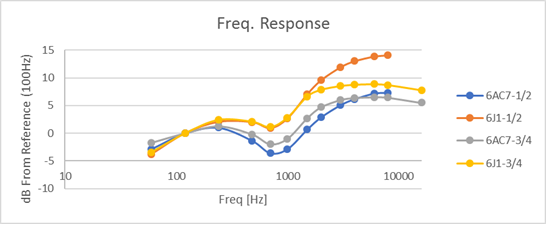I'm looking for a DIY or professional method for easily measuring frequency response of an audio system from 10Hz to 10kHz. It is for a guitar amplifier, and I would like a better way to characterize my changes without playing actual guitar through it all the time as I'm tweaking. Note this is a tube amplifier, so not easy to model.
In the RF world I would use a Vector Analyzer... I was trying to come up with an easy way using a scope and a sweep generator, but have yet to think of a good method. The best I have so far:
- Create a DDS system with an Arduino platform and take ADC measurements of the input and output peaks, but that involves a whole project on its own...
- Using a DMM on AC mode, but it gets inaccurate above 1kHz it seems. (Faster then reading scope lines)
- Some sort of Audacity plugin or program using my PCs audio card? (Nice automated plot or data export?)
I should note my scope does not have auto measure capability, it is from 1978... Otherwise, yes a modern scope I could at least use peak measure as I change the frequency generator.
Currently I occasionally take a pile of hand measurements with a generator and scope. Manually changing the frequency, and writing down the measurements.

